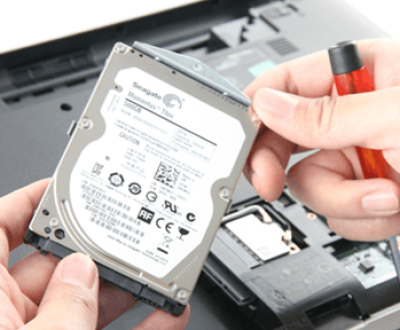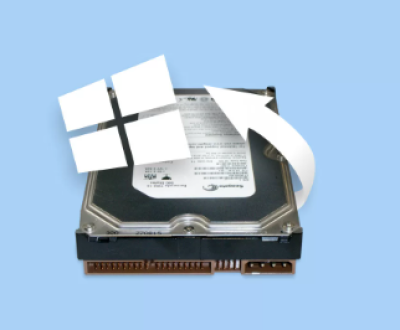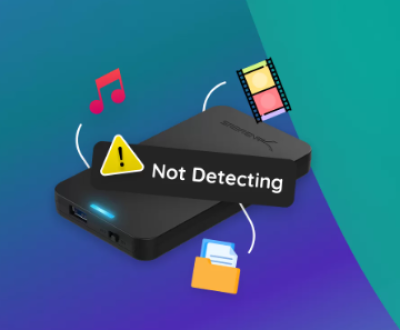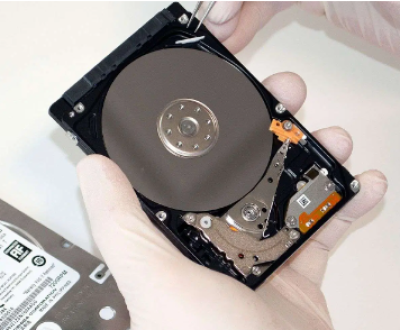Hard drives can fail for a variety of reasons, including physical damage, logical errors, or mechanical malfunctions. Identifying the cause of the failure is the first step in the repair process.
Mechanical Failures: These involve physical damage to the internal components, such as the read/write heads, spindle motor, or platters. Symptoms include unusual noises like clicking or grinding.
Logical Failures: These occur when the file system is corrupted due to software issues, accidental formatting, or malware. While the drive remains physically intact, the data becomes inaccessible.
Electronic Failures: Issues with the drive’s circuit board or power supply can prevent the hard drive from functioning.

Firmware Corruption: Malfunctions in the drive’s firmware, the embedded software controlling its functions, can render the drive unreadable.
Signs of a Failing Hard Drive
Recognizing the warning signs of a failing hard drive can prevent total data loss. Look out for the following indicators:
Unusual clicking, whirring, or grinding noises
Frequent system crashes or blue screen errors
Slow access times and file transfers
Files disappearing or becoming corrupted
The drive not being recognized by the system
If you experience any of these symptoms, it is crucial to stop using the drive immediately to prevent further damage.
The Hard Drive Repair Process
Hard drive repair involves diagnosing the issue and applying the appropriate fix. Here is a general overview of the repair process:
Diagnosis: Technicians use specialized tools to identify the cause of the failure. This may include physical inspection, firmware analysis, and advanced scanning methods.
Repair or Replacement of Components: In cases of mechanical failure, faulty components like read/write heads or circuit boards may be replaced.
Data Recovery: Specialized software or hardware techniques are used to retrieve inaccessible data. This can include sector-by-sector cloning and repairing corrupted file systems.
Testing and Verification: Once the repair is complete, the drive is rigorously tested to ensure full functionality and data integrity.
Top Hard Drive Repair Services in New York
When selecting a hard drive repair service in New York, it’s essential to choose a reputable company with experience handling various types of failures. Here are some of the best options:
Data Recovery NYC
Specializes in hard drive, SSD, and RAID recovery
Offers emergency same-day services
Certified cleanroom environment for safe repairs
SalvageData Recovery
ISO-certified and SOC II compliant
Free diagnostic evaluation
Expertise in all types of drive failures
Data Savers NYC
Affordable and efficient service
Offers no-data, no-fee policy
Works with individuals and large businesses
Secure Data Recovery
24/7 emergency service available
Class 10 ISO 4 cleanroom for advanced repairs
High success rates in mechanical and logical failures
DriveSavers Data Recovery
Partnered with major tech companies
Fast turnaround times
Free quotes and evaluations
Cost of Hard Drive Repair in New York
The cost of hard drive repair varies depending on the severity of the issue and the service provider. Here is a general pricing breakdown:
Basic Logical Failures: $100 – $500
Mechanical Failures: $500 – $1.500
Complex RAID Recovery: $1.000 – $3.000
Emergency Services: Additional $300 – $1.000 surcharge
Always request a detailed quote before proceeding with repairs.
DIY Hard Drive Repair: Is It Possible?
While some minor issues like file corruption can be resolved using data recovery software, physical repairs should always be left to professionals. Attempting DIY repairs without the proper tools or expertise can exacerbate the damage and make data recovery impossible.
Recommended Data Recovery Software:
Panda Assistant is an advanced data recovery tool that provides an intuitive and effective solution for recovering lost or deleted files. Whether you’ve accidentally deleted important documents, photos, or videos, or are dealing with a damaged or formatted storage device, Panda Assistant can help restore your data to its original form. The software supports a wide range of file formats and devices, including hard drives, USB flash drives, SD cards, and external drives, ensuring that users can recover lost data regardless of the device they are using.
Preventing Future Hard Drive Failures
Taking proactive measures can reduce the risk of future hard drive failures:
Regular Backups: Use automated backup solutions to safeguard important data.
Monitor Drive Health: Utilize software like CrystalDiskInfo to check for signs of degradation.
Handle with Care: Avoid physical shocks and extreme temperatures.
Power Protection: Use a UPS (uninterruptible power supply) to prevent damage from electrical surges.
Update Firmware: Keep your drive’s firmware updated to avoid compatibility and performance issues.
When to Replace vs. Repair a Hard Drive
In some cases, replacing a failing hard drive is more cost-effective than repairing it. Consider replacement if:
The drive is older than 5 years
Data is not critical or has been backed up
Repair costs exceed the value of the drive
About us and this blog
Panda Assistant is built on the latest data recovery algorithms, ensuring that no file is too damaged, too lost, or too corrupted to be recovered.
Request a free quote
We believe that data recovery shouldn’t be a daunting task. That’s why we’ve designed Panda Assistant to be as easy to use as it is powerful. With a few clicks, you can initiate a scan, preview recoverable files, and restore your data all within a matter of minutes.
Subscribe to our newsletter!
More from our blog
See all postsRecent Posts
- How to recover data from portable hard drive 2025-07-10
- How to recover data from a broken hard drive 2025-07-10
- How do i recover files from a formatted hard drive 2025-07-10

 Try lt Free
Try lt Free Recovery success rate of up to
Recovery success rate of up to









